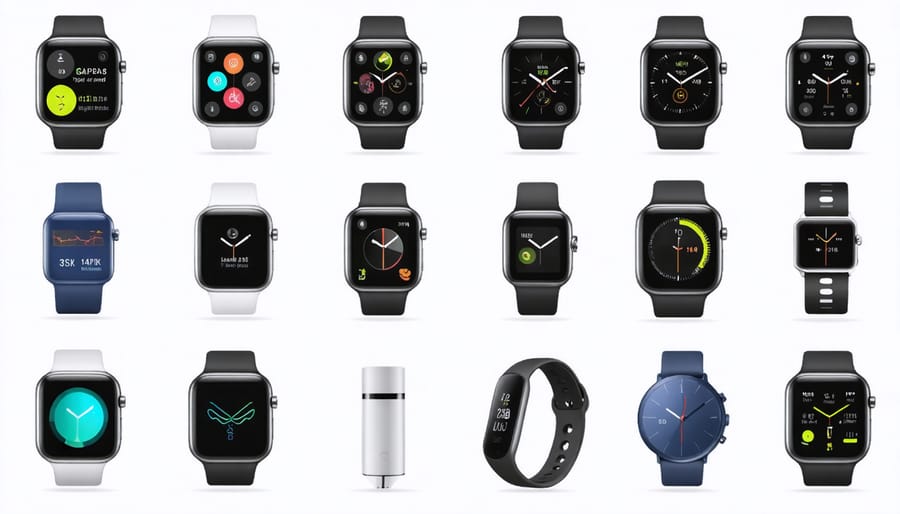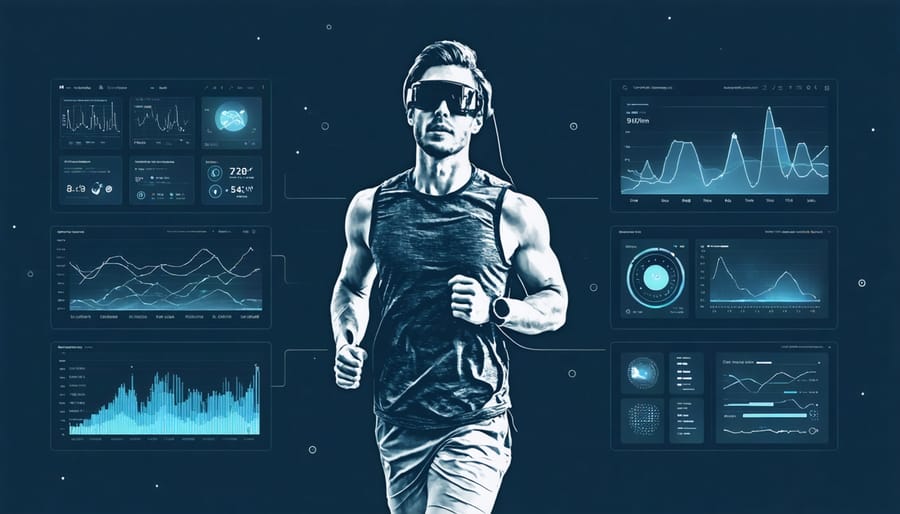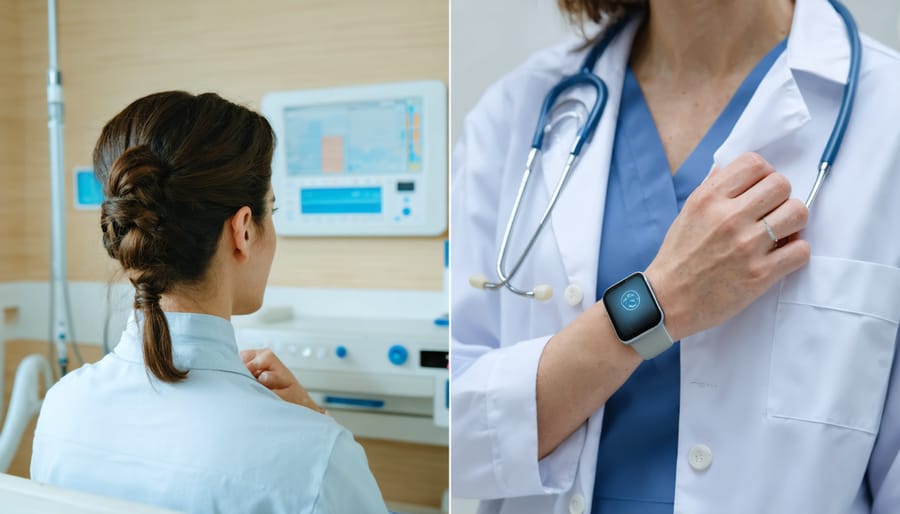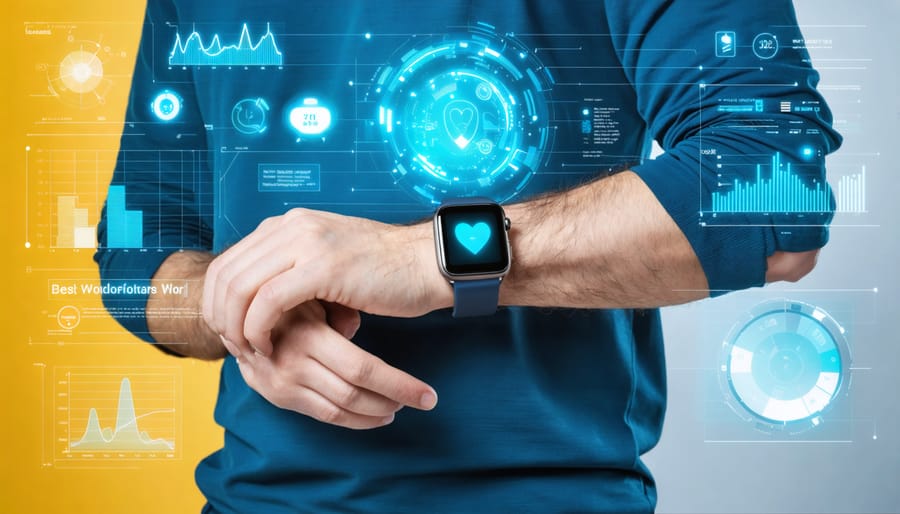Wearable technology in healthcare has revolutionized how we monitor and manage our personal health. From smartwatches tracking heart rates to biosensors detecting early disease markers, these powerful devices transform traditional healthcare into a more personalized, proactive experience. The benefits of wearable technology extend far beyond simple step counting, enabling real-time health monitoring, early disease detection, and improved patient care.
These innovative devices serve as a bridge between everyday life and medical expertise, empowering individuals to take control of their health journey while providing healthcare professionals with valuable, continuous patient data. From fitness enthusiasts to chronic disease patients, wearable healthcare technology offers unprecedented insights into our bodies’ functioning, making preventive healthcare more accessible and effective than ever before.
As these technologies continue to advance, they’re becoming increasingly integral to modern healthcare delivery, promising a future where personalized health monitoring is as natural as wearing a watch.
The Evolution of Healthcare Wearables
Healthcare wearables have come a long way from the simple pedometers of the 1960s that merely counted our steps. The evolution began with basic fitness trackers in the early 2000s, which monitored daily activity levels and sleep patterns. These devices marked the beginning of personal health monitoring accessible to everyday Canadians.
By the mid-2010s, we saw the emergence of more sophisticated devices that could measure heart rate, blood oxygen levels, and even detect irregular heart rhythms. Smartwatches transformed from simple time-telling devices into comprehensive health monitoring tools, capable of tracking multiple vital signs simultaneously.
Today’s healthcare wearables represent remarkable technological advancement. Modern devices can monitor blood pressure, analyze sleep quality, detect falls, and even perform basic ECG readings. Some cutting-edge wearables can track stress levels through heart rate variability and skin conductance, while others help manage chronic conditions like diabetes through continuous glucose monitoring.
The integration of artificial intelligence has made these devices even more powerful, enabling them to identify potential health issues before they become serious problems. They can now provide personalized health insights and recommendations based on individual data patterns.
What’s particularly exciting for Canadians is how these devices are increasingly being recognized by healthcare providers as valuable tools for preventive care and remote patient monitoring, making quality healthcare more accessible to everyone, including those in remote communities.

Common Types of Healthcare Wearables
Fitness and Activity Trackers
Fitness and activity trackers are among the most popular wearable devices in healthcare, helping Canadians monitor and improve their daily wellness routines. These compact devices, typically worn on the wrist, capture essential health metrics throughout the day, including step count, distance traveled, calories burned, and heart rate.
Many modern fitness trackers also analyze sleep patterns, providing insights into sleep quality, duration, and cycles. This information helps users understand their rest habits and make improvements for better health outcomes. Advanced models can even detect stress levels through heart rate variability measurements and prompt users to take calming breaks when needed.
These devices sync with smartphone apps to provide detailed analytics and progress tracking over time. Users can set personalized goals, receive movement reminders, and join virtual communities for added motivation. Some trackers also offer guided breathing exercises and inactive alerts to promote regular movement throughout the day.
For many Canadians, these devices serve as daily wellness companions, encouraging more active lifestyles and mindful health choices through real-time feedback and gentle reminders.

Medical Grade Wearables
Medical grade wearables represent a significant advancement in healthcare technology, offering precise monitoring and management of specific health conditions. These devices are approved by health authorities and provide hospital-quality data for healthcare providers to make informed decisions about patient care.
Common examples include continuous glucose monitors for diabetes management, which track blood sugar levels 24/7 and alert users to dangerous fluctuations. Heart monitoring devices, such as medical-grade ECG patches, can detect irregular heart rhythms and potential cardiac issues with greater accuracy than consumer devices.
For patients with respiratory conditions, specialized wearables measure breathing patterns, oxygen levels, and other vital signs. These devices often connect directly to healthcare systems, allowing doctors to monitor patients remotely and adjust treatment plans as needed.
Unlike consumer wellness devices, medical grade wearables undergo rigorous testing and certification processes to ensure reliability and accuracy. Many are covered by health insurance plans when prescribed by healthcare providers, making them accessible to Canadians who need them for managing chronic conditions.
Smart Health Watches
Smart health watches combine the convenience of a traditional timepiece with advanced health monitoring capabilities. These versatile devices track essential health metrics like heart rate, sleep patterns, and physical activity while offering smart features such as message notifications and GPS navigation. Popular models from companies like Apple, Fitbit, and Samsung can monitor blood oxygen levels, detect irregular heart rhythms, and even record ECG readings. Many watches now include stress tracking and guided breathing exercises to support mental wellness. With built-in fitness programs and activity reminders, these devices help Canadians stay active and maintain healthy habits throughout the day. Some advanced models can automatically detect falls and contact emergency services if needed, making them particularly valuable for older adults or those with health concerns.
Health Benefits and Applications
Preventive Health Monitoring
Wearable technology plays a crucial role in preventive healthcare by continuously monitoring vital signs and health indicators before serious issues develop. These devices track important health metrics like heart rate, blood pressure, sleep patterns, and physical activity levels, providing early warning signs of potential health concerns.
For example, smartwatches can detect irregular heart rhythms that might indicate atrial fibrillation, allowing users to seek medical attention before experiencing complications. Similarly, continuous glucose monitors help people manage their blood sugar levels more effectively, potentially preventing diabetes-related complications.
These devices also support preventive health by encouraging regular physical activity and better sleep habits through real-time feedback and gentle reminders. Many wearables now include stress monitoring features that measure heart rate variability and skin conductance, helping users recognize and manage stress levels before they impact their health.
The data collected by these devices can be shared with healthcare providers, enabling more informed discussions about health risks and preventive strategies. This proactive approach to health monitoring helps Canadians take control of their well-being and potentially reduce their risk of developing chronic conditions.
Chronic Disease Management
Wearable technology has revolutionized the way people manage chronic conditions, offering continuous monitoring and real-time health insights. For individuals living with diabetes, smart watches and continuous glucose monitors provide instant blood sugar readings and trend analysis, helping them make timely decisions about medication and diet. These devices can even send alerts to healthcare providers when readings fall outside normal ranges.
Heart patients benefit from devices that track heart rhythm, blood pressure, and activity levels throughout the day. This constant monitoring helps detect irregular patterns early and allows for prompt medical intervention when necessary. Some devices can even predict potential cardiac events before they occur, giving patients valuable time to seek medical attention.
For those managing respiratory conditions like asthma or COPD, wearable sensors track breathing patterns, air quality, and environmental triggers. This information helps patients better understand their condition triggers and adjust their activities accordingly.
The data collected by these devices also helps healthcare providers make more informed treatment decisions, adjust medications, and develop personalized care plans. This proactive approach to chronic disease management often leads to better health outcomes and improved quality of life.

Mental Health and Wellness
Wearable technology has revolutionized mental health monitoring by providing real-time insights into stress levels and emotional well-being. Smart devices can track physiological markers like heart rate variability and sleep patterns to identify potential stress triggers. Many wearables now include mindfulness features, guided breathing exercises, and meditation timers to help users manage anxiety and maintain emotional balance. These tools are becoming increasingly important for digital wellness and mental health support, offering gentle reminders to take breaks, practice self-care, and maintain healthy daily routines. Some advanced devices can even detect changes in behavior patterns that might indicate mood shifts, allowing for early intervention and better mental health management. This proactive approach helps Canadians take control of their mental well-being through data-driven insights and personalized support strategies.
Choosing the Right Healthcare Wearable
Selecting the right healthcare wearable starts with identifying your specific health goals and needs. If you’re primarily focused on fitness tracking, a basic smartwatch or fitness band that monitors steps, heart rate, and sleep patterns might be sufficient. For those managing chronic conditions like diabetes or heart disease, look for devices with specialized features such as continuous glucose monitoring or ECG capabilities.
Consider the device’s accuracy and reliability, particularly if you’re using it to track vital health metrics. Look for wearables that have been clinically validated or approved by health authorities. Battery life is another crucial factor – some devices need daily charging while others can last weeks between charges.
The wearable’s compatibility with your smartphone and other devices is important for seamless data integration. Check if the device works with your preferred health apps and whether it can share data with your healthcare providers.
Comfort and ease of use should not be overlooked. The best wearable is one you’ll actually use consistently. Consider the device’s size, weight, and how it fits into your daily routine. Water resistance is essential if you’re active or want to wear the device while swimming or showering.
Price is also a consideration, but remember to factor in any subscription costs for premium features or data analysis. Some health insurance providers offer coverage or discounts for certain wearables, so it’s worth checking with your insurance company before making a purchase.
Wearable technology has revolutionized how we approach personal healthcare, transforming healthcare delivery from reactive to proactive care. These devices have empowered Canadians to take control of their health through continuous monitoring, early detection of potential issues, and personalized health insights.
As we look to the future, wearable healthcare technology will become increasingly sophisticated and integrated into our daily lives. Advances in artificial intelligence, sensor technology, and data analytics will enable more accurate health monitoring and predictive capabilities. We can expect to see new applications in mental health support, chronic disease management, and preventive care.
The growing adoption of wearable technology in healthcare represents a significant step toward more accessible, personalized, and efficient healthcare for all Canadians. By embracing these innovations, we’re not just improving individual health outcomes – we’re building a foundation for a more proactive and sustainable healthcare system that benefits everyone. The future of healthcare is wearable, connected, and centered on empowering individuals to make informed decisions about their health.

